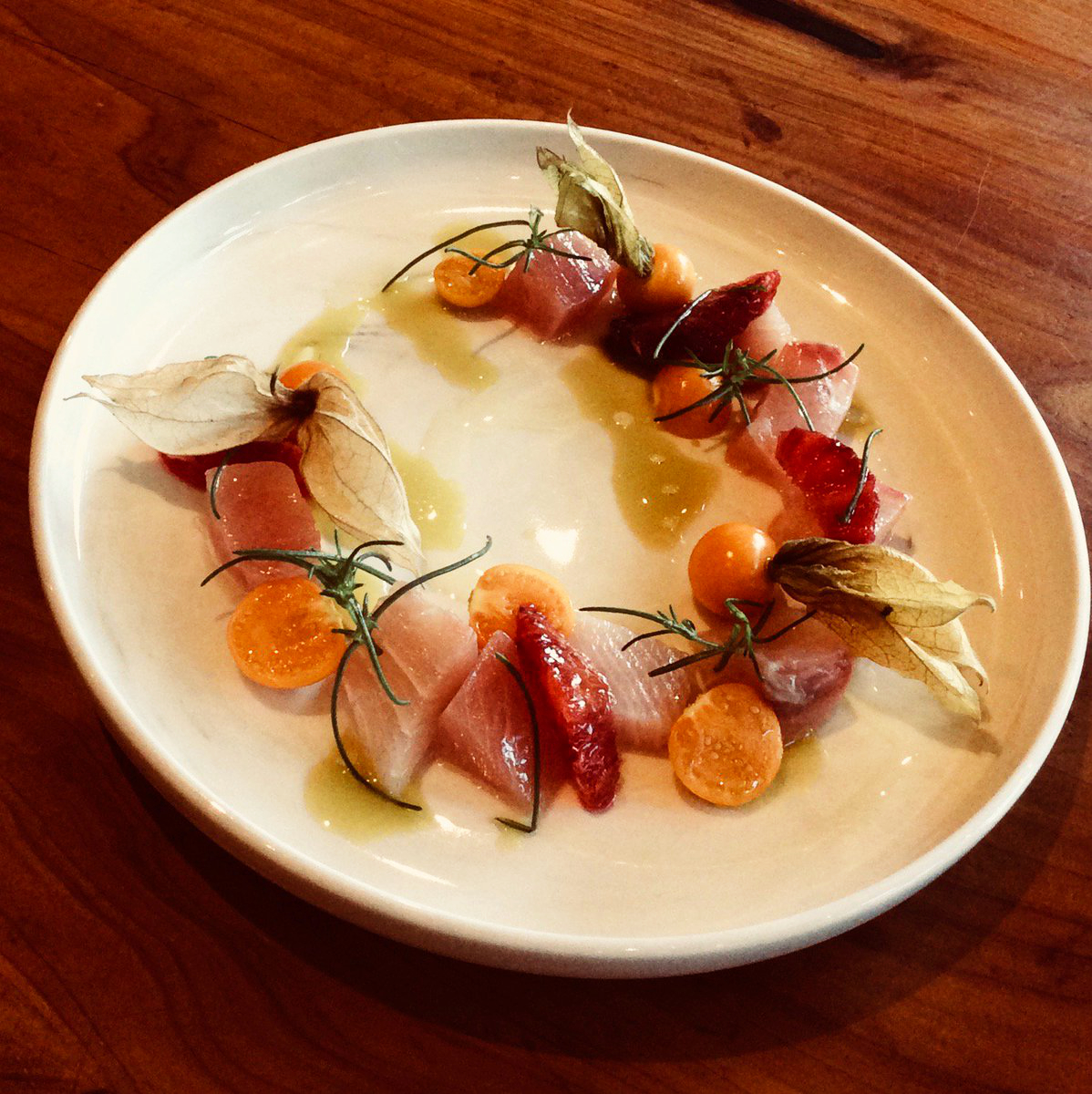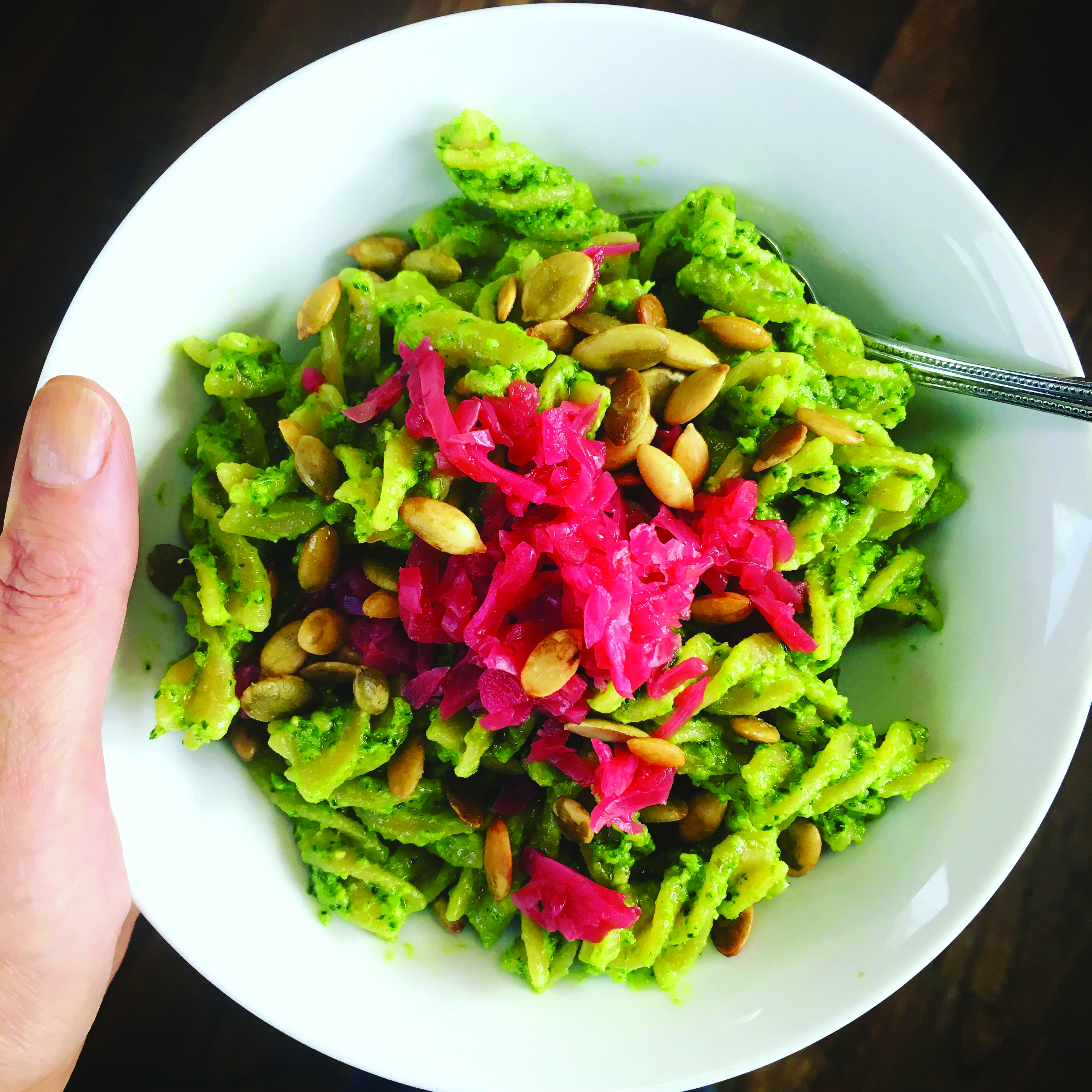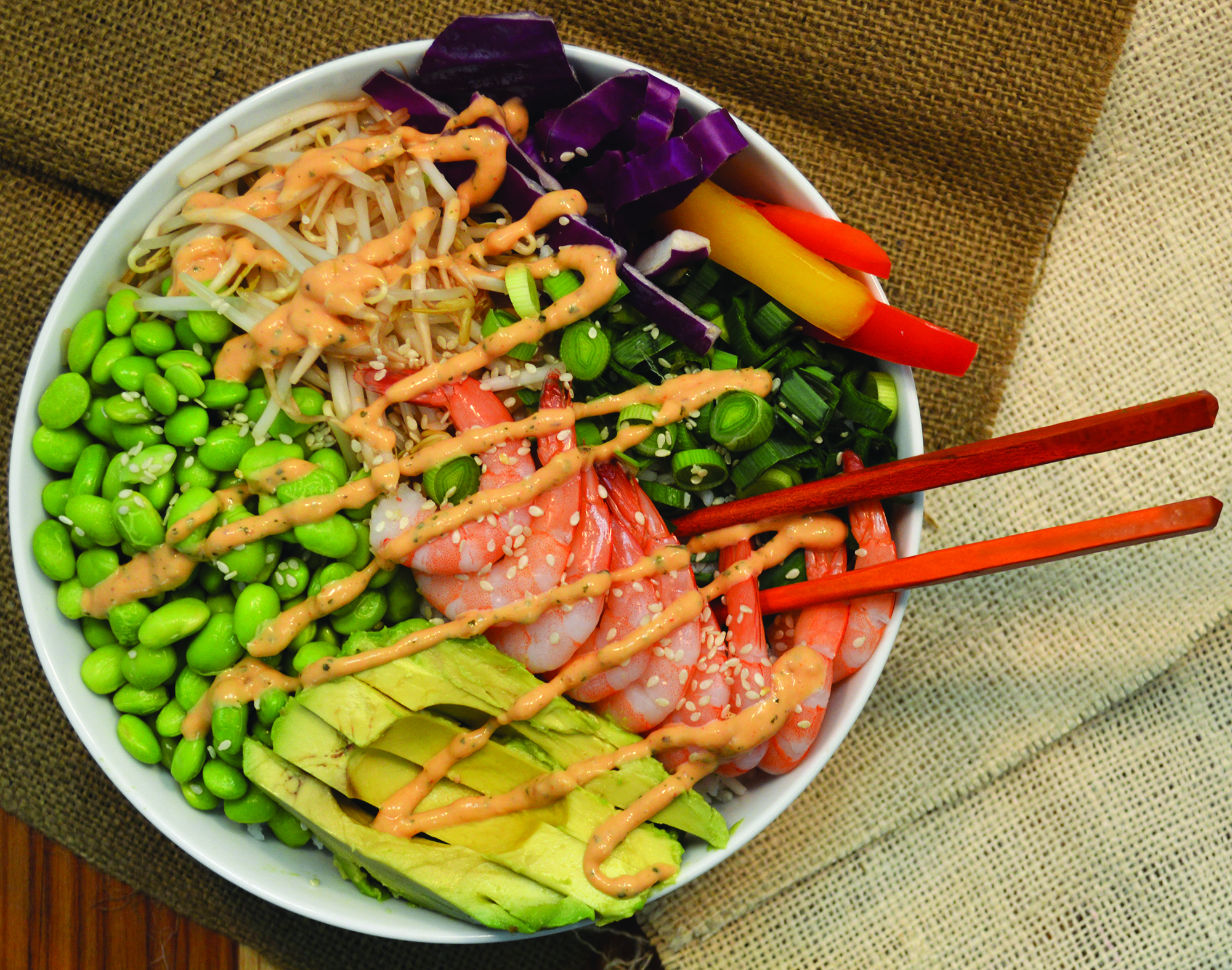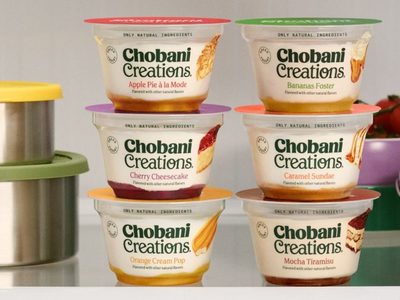CHICAGO — Long before refrigeration, fermentation was used as a means to extend the shelf life of perishable foods. Nomadic tribes would fill sheepskin backpacks with milk and microbial-loaded grains, which fermented the lactose into lactic acid, producing a satiating drinkable yogurt to nourish during their journeys. Roman chefs would dry, ferment and smoke premium meats to ensure availability to the emperor during the winter months. And Koreans relied on fermentation to preserve vegetables for consumption after the harvest.
Today, while fermentation still preserves foods, consumers enjoy fermented foods for other reasons, most notably for wellness benefits and flavor adventure. Chefs have learned that incorporating fermented ingredients into prepared foods adds an extra dimension to flavor, one not attainable by any other means. Fermented ingredients also carry a healthy halo, and health sells these days.
Unlocking probiotic flavor
Chefs are getting funky with their food, experimenting with a variety of fermented ingredients to add complex flavors that add personality to the menu.
“For me, fermented ingredients bring ‘pickled’ flavors to dishes without the overpowering flavor of vinegar," said Ryan McIlwraith, executive chef of The Absinthe Group in San Francisco.
Many of his signature dishes include the same ingredient prepared two ways, one of which is fermented. At Bellota, for example, there’s a hot tapas plate that combines roasted Brussels sprouts with fermented Brussels sprouts and a stewed dish containing fermented cabbage and charred cabbage.
 “At Barcino, we created a sauce for our raw Hamachi made from fermented tomatillos,” Mr. McIlwraith said. “For that dish, we blend the tomatillos with some of the fermenting juice. We don’t have to add any salt or vinegar. The sauce is already balanced.”
“At Barcino, we created a sauce for our raw Hamachi made from fermented tomatillos,” Mr. McIlwraith said. “For that dish, we blend the tomatillos with some of the fermenting juice. We don’t have to add any salt or vinegar. The sauce is already balanced.”
Al’s Place in San Francisco is known for its pickled french fries. Chef-owner Aaron London brines red-skinned potatoes in a salt and cabbage solution. As the potatoes start to ferment, they become infused with a tang that remains after being twice fried and seasoned with salt. They are intended to be dipped into another house specialty: smoked apple sauce.
At Emmer & Rye in Austin, Texas, chef-owner Kevin Fink uses house-made fermented ingredients for various reasons.
“They add two types of acid, lactic and acetic; they add probiotic craveability to dishes; and they unlock flavors that were underneath the surface of fresh items,” he said. “We don’t buy spices. We only use the tops, roots, or odds and ends to create a larder of items to help the diversity of our food.”
Favorites in his kitchen include fermented tomato water, sugar fermented green mustang grapes, green allium flower pod capers and toasted mesquite vinegar.
“The ability to unlock flavor and deliciousness is every chef’s quest,” Mr. Fink said. “The arsenal of fermenting helps do that.”
“As chefs, we are always learning and advancing,”Mr. McIlwraith said. “With the speed of information sharing, sometimes it seems that we all learn new things at similar times. So, while they may be seen as hot trends, my view is that we are all progressing and learning together. Fermentation has been around for a very long time, so it may be seen as a current trend, but I view it as a return to a food preparation method that we lost.”
Adding a dose of healthfulness
The sixth annual “What’s trending in nutrition” national survey, which polled more than 2,000 registered dietitians across the U.S., identified fermented foods such as kefir, kimchi, kombucha, miso, sauerkraut, tempeh and yogurt as the No. 1 superfood for 2018. The rising popularity of fermented foods demonstrates how consumers have expanded their definition of wellness to include improved gut health, which is a benefit of consuming fermented foods.
 Superfood powers is why Jodie Krumpe, founder of Zeeland, Mich.-based Cultured Love L.L.C., got into the specialty kraut business. She found that fermented foods helped build back her daughter’s immunity after a long stint on antibiotics.
Superfood powers is why Jodie Krumpe, founder of Zeeland, Mich.-based Cultured Love L.L.C., got into the specialty kraut business. She found that fermented foods helped build back her daughter’s immunity after a long stint on antibiotics.
“Fermented foods put powerful probiotics back into her digestive system,” she said.
Cultured Love krauts are marketed as probiotic foods. They are fermented with only raw vegetables and spices. Salt is added for flavor and to facilitate the breakdown of the vegetable structure, allowing the water in the vegetable to be pressed and become part of the brine, the liquid environment that helps maintain an oxygen-free environment during fermentation.
“Once all the vegetables are cut, spices and salt are added, and everything is mixed together,” Ms. Krumpe said. “The fresh kraut mixture is allowed to sit in a temperature-controlled room to encourage the microbial activity necessary for fermentation. This is where magic happens. It turns out that cabbage is a vegetable naturally full of lactobacillus and other microbes, so it is especially useful in fermentation.
“Sauerkraut on its own is full of probiotics from the fermentation process, and our flavor varieties also contain many additional benefits.”
Dillyicious, which tastes like a dill pickle, contains anti-inflammatory turmeric. Root for Ginger, as the name suggests, includes ginger, which aids in digestion and has anti-nausea properties.
Though the krauts may be eaten alone — the company suggests having a tablespoon before each meal to benefit digestion — cooking with them can be a culinary adventure.
“In addition to immediately ratcheting up the probiotic and nutritional content of dishes, fermented foods open up a whole new layer of flavor in foods that would otherwise be unremarkable,”Ms. Krumpe said. “Just the fermentation itself adds a wonderful tangy, acidic property when served raw, blended in a salad or on a sandwich. And with our unique and robust flavor profiles, the added flavor offered by these blends of vegetables and spices is surprisingly delicious. So not only can it be added to simple protein dishes — brats, burgers, fish, black bean patties and tofu — it can also be added to salads, used as a topping for sweet potatoes, and blended into hummus or pesto with astounding effect on flavor.”
Wild fermentation
Cabbage is not the only vegetable that may be fermented. In addition to a range of flavored krauts, Wildbrine L.L.C., based in Santa Rosa, Calif., sells fermented salsas, all made through a process it calls wild fermentation.
 “This allows fermentation to happen on its own time and in its own way,” said Rick Goldberg, co-owner. “We add sea salt to our veggie and spice mix and provide the right environment for the naturally occurring probiotic microorganisms. Then, we let the lactic acid created through this natural process preserve the vegetables, create bright flavors and produce a salsa that’s teeming with robust probiotics. There is no vinegar, added sugar or any kind of lab culture in our products.”
“This allows fermentation to happen on its own time and in its own way,” said Rick Goldberg, co-owner. “We add sea salt to our veggie and spice mix and provide the right environment for the naturally occurring probiotic microorganisms. Then, we let the lactic acid created through this natural process preserve the vegetables, create bright flavors and produce a salsa that’s teeming with robust probiotics. There is no vinegar, added sugar or any kind of lab culture in our products.”
Salsa Rojo is made with crunchy cabbage, tomatoes, red peppers and Anaheim chilies. Its green counterpart, Salsa Verde, combines green tomatillos, fire-roasted peppers, jalapeños, cilantro and lime.
“Fermentation takes these salsas from sabrosa to fabulosa,” Mr. Goldberg said.
Farmhouse Culture, based in Watsonville, Calif., has grown beyond kraut and now offers other organic fermented vegetables. Ginger beets blends the earthiness of beets with the fresh crisp zing of ginger. The orange ginger carrots product is both sweet and tangy, while the Taqueria Mix combines regional vegetables from south of the border. Carrots, daikon radish, jalapeño, jicama and onion ferment in a cabbage brine.
“It’s the ideal taco companion," said Kathryn Lukas, founder. "It brings along probiotic benefits to help maintain a healthy gut as it spices up your plate. To keep our cultures alive and thriving, we submerge our veggies in a considerable amount of brine. We encourage customers to not just throw it away when they are done, as you can use it to add probiotics to your recipes or enjoy it as a tasty gut shot.”
Hand-crafted flavor
To attain maximum probiotic benefits, fermented foods should not be heated, as high temperatures destroy the good-for-you bacteria. But if health and wellness is not the purpose for consumption, it is acceptable to cook with fermented foods. The heat should not alter the flavor sensation.
“When adding kraut to a stir fry of vegetables and rice with a protein, be sure to add a bit of the raw kraut juice to really make the food pop with flavor,” Ms. Krumpe said. “In addition, the juice acts a little like wine to help deglaze the pan.”
Such interest in savory fermented foods is growing alongside consumers’ appreciation for naturally healthy functional foods and for hand-crafted foods prepared with artisan technique and pride. This helps explain the growing penchant for fish sauce and shrimp paste and for tempeh as a more flavorful kind of tofu, according to the culinary trend trackers at Packaged Facts.
“Fermented foods have found a rising tide of popularity due to the convergence of a desire for spicier, bolder flavors and a growing focus on global foods that represent authentic preparations,” said David Sprinkle, research director at Packaged Facts.  “Fermented foods are finding artisan, regional and chef-driven takes. Their authenticity is rooted in hundreds of years of craft preparation and artisan pride.”
“Fermented foods are finding artisan, regional and chef-driven takes. Their authenticity is rooted in hundreds of years of craft preparation and artisan pride.”
With one of the biggest movements in the culinary world being a renewed interest in local, handcrafted foods, house-made fermented foods are a natural extension. Today’s diners and shoppers seek connections with their food along with flavor adventure. Fermented foods and food ingredients are one way to give a classic dish a unique twist.
Tulkoff Food Products Inc. in Baltimore, Md. makes it easy to add that twist. The company’s spicy kimchi aioli combines cabbage, cilantro, garlic and spices with thick, rich mayonnaise, providing a squeezable condiment that is mildly spiced and uniquely smoky, ending with sweet-heat notes. It is light orange in color with visible ingredients and has a high-cling rate, making it just as attractive as a poke bowl drizzle or as a sandwich spread.
“We reviewed multiple flavor trend reports when it came to introducing a new product and found that Korean flavors are in high demand by customers and driving favorable menu offerings,” said Phil Tulkoff, president. “Our spicy kimchi aioli allows operators to introduce a unique Korean flavor with the convenience of a mayonnaise-based product that can cross multiple menu items and day parts.”
It is more than a condiment. It may be used in recipes, too.
“To add an extra layer of flavor to breaded fish or chicken, dip the cleaned, raw protein into spicy kimchi aioli before coating it in panko bread crumbs and baking,” he said. “Add some aioli to the pot of steaming grits or rice. Blend it into a meatball or meatloaf mixture before cooking.”



